The Creation of the First Major Exhibition of Tiffany Glass Mosaics
“God has given us our talents, not to copy the talents of others, but rather to use our brains and imagination in order to obtain the revelation of true beauty.” – Louis Comfort Tiffany
When viewing the results of Louis Comfort Tiffany’s drive for the creation of true beauty, many think of his work in glass: leaded glass lamps and windows as well as blown glass. Yet one of his more intricate artistic glass manifestations resulted in visions of saints, nature, and symbolism depicted through creation of glass mosaics. Created from hundreds, and most often thousands, of pieces of Tiffany glass, each carefully selected shard had its own calling to the working artists, who would place it where they felt it was intended to be to achieve a level of detail and beauty not often attained.
Mosaics, unlike the traditional stained glass which is a form of transmitted light (i.e. the light shining through the glass), are a kind of reflected light so the effect is a result of light upon glass and being reflected back. The process uses a different type of glass selection (with the occasional piece of mother-of-pearl) to maximize their reflective light qualities attained by the glass surface, texture, and color within each piece.

Corning Museum of Glass (CMoG) Curator of American Glass Kelly Conway has always had an affinity for Tiffany glass – something she shares with The Neustadt Museum’s Director and Curator Lindsy Parrott. In fact, they first connected as classmates in graduate school, focusing on their mutual love of glass, and fifteen years later have worked together on various Tiffany-related projects as professional colleagues. But it was thanks to Karol Wight, president and executive director of CMoG, who spoke with Lindsy while on a trip to New York, that the two colleagues reconnected and formulated the initial idea for a collaborative exhibition exploring a facet of Tiffany glass never undertaken before by any museum: Tiffany’s mosaics.
In the 1800s, Tiffany was incorporating various kinds of glass decoration into his interior designs for high-profile clients. He traveled throughout Europe and the Near East gathering inspiration for future design ideas and projects, taking a particular interest in the very early mosaics used within the architecture as a decorative and often religious reflection with a wide range of color and design. Of particular interest were the mosaics displayed in the many Byzantine churches he visited.
“Although Louis C. Tiffany is best known for his pioneering leaded glass windows and lamps, his mosaics are the culmination of his experimentation and artistry in glass,” said Lindsy Parrott, director and curator at The Neustadt and co-curator of the upcoming exhibit Tiffany’s Glass Mosaics. “Indeed, the mosaics represent an exciting synthesis of his work in both leaded and blown glass. Using a rich variety of materials, including multicolored opalescent glass and shimmering iridescent glass, accented with three-dimensional glass ‘jewels,’ Tiffany’s innovations in glass established a bold new aesthetic for mosaics and contributed a uniquely American character to the centuries-old art form.” Kelly Conway agrees, stating, “Tiffany was creating mosaics for a modern period; a period of rapid cultural and economic change with a building boom underway. The development and application of innovative glass technologies and Tiffany’s design approach demonstrated a true American ingenuity.”
From around 1890 through 1910, mosaics emerged as a legitimate trend, and were on full view at the 1893 World’s Fair in Chicago, resulting in many residential and commercial commissions for Tiffany. The mosaic artisans in Tiffany’s studios were “able to be agile to do one piece, such as a fireplace surround or panel, or outfit an entire home or commercial space,” notes CMoG Curator of American Glass, Kelly Conway. “Small scale goods including desk accessories, tea stands, and other higher-end pieces were also making a statement with mosaic accents.”
Once the institutions decided to put together a major exhibit on Tiffany’s glass mosaics, the brainstorming began by outlining the many facets of this exhibit and how broad CMoG could make it. As with the many pieces of glass in a single mosaic, this was the task of the CMoG “village” and The Neustadt.
“The whole staff has contributed to this exhibition-educators, scientists, the Make-Your-Own Glass staff, the hot glass demo team, communications department, librarians, photographers, travel coordinators, the rights and reproductions department, the digital team, registration and preparators, and the conservators all worked to make sure things came together successfully. We do everything from coordinating the loaned pieces to merchandising, to planning for programs for kids and teens, and more,” according to Kelly Conway. “It is an organic process-every department had to be agile and able to change as something like this often can start at one place and land somewhere else. The end result is always better than what you could dream of at the beginning.”
Building the Exhibition: Gathering Finished Pieces
As most mosaics designed as “in-place” art elements and become a part of the architecture of private homes and commercial buildings, it was known that creating a well-rounded comprehensive exhibition could prove challenging. It was only through the coming together of curators, collectors, caretakers of churches and other buildings, and individuals who enjoy having works by Tiffany as part of their home that this exhibition was going to happen.
To achieve a broad collection of mosaics to have on display, staff members from CMoG and The Neustadt Museum used important examples of Tiffany’s mosaics in their respective permanent collections to form the core of the exhibition checklist and then contacted their network of museum and Tiffany colleagues to request additional loans to round out the exhibition’s story. The networking paid off, and many institutions were “on board” to help create a beautiful selection of mosaics to be seen in person. There are even objects from The Charles Hosmer Morse Museum of American Art in Winter Park, Florida-a museum that seldom lends objects from its renowned collection.
“One of the unexpected highlights of the collection is a magnificent mosaic panel, Fathers of the Church, which was exhibited at the 1893 World’s Columbian Exposition in Chicago,” says Lindsy Parrott of The Neustadt Museum. “It was prized by Louis C. Tiffany and he retained it for his personal collection at Laurelton Hall, his country estate on Long Island. This panel will be prominently featured in the mosaic exhibition.”
Building the Exhibition: Creating a Digital Compilation for Study and Exploration
Being able to view the majority of Tiffany mosaic masterpieces in person would make the average cross-country road trip look like a quick drive to a convenience store. In order to round out the exhibit, it was felt that attendees and scholars should be able to view, in detail, in situ Tiffany mosaics through digital reproduction.
Thus, a core team of CMoG professional photographers set out to document large-scale Tiffany mosaics in their original architectural settings, and photographing other pieces residing in personal collections and other museums. These hi-res digital photos are the first true detailed photography of Tiffany’s mosaics. Many were photographed in New York State within a two-hour drive of Corning where there are a half-dozen sites where Tiffany and his glass artists worked mainly within ecclesiastical circles.
“Tiffany promoted these mosaics as permanent and durable. Ancient and Byzantine and early mosaics have lasted for centuries. Tiffany was building a decidedly American version as America continued to develop a sense of itself,” says Kelly Conway. But in order to see them in the space for which they were designed required not only travel, but ladders, scaffolding, and the occasional use of binoculars.
For example, the mosaic of The Last Supper was executed three times. Now, the viewer can compare each version and what qualities of each differ from one another including how they enhance the setting where they are placed and the various effects achieved by the selection of different types of glass used in each of the three versions.
The importance of the creation of this digital catalogue cannot be understated. “As churches close and congregations dwindle, these artistic works are at risk for not being properly cared for. We hope to raise awareness of this growing issue across the country,” said Kelly Conway.
Building the Exhibition: The Elements of Creation
“Color is to the eye what music is to the ear.” – Louis Comfort Tiffany
“The history of glass mosaics extends back more than 3,000 years, and the permanent collection at CMoG is the perfect backdrop for contextualizing the work undertaken by Tiffany’s firm to popularize this technique in the United States,” says Karol Wight.
The exhibition will reveal the process of creating a mosaic at Tiffany’s studios-through examples of detailed watercolor studies and drawings to surviving glass sample panels and examples of completed work. Museum visitors will gain insight into the labor-intensive processes, including the selection of individual pieces of glass, which played a vital role in the overall aesthetic of the final product.
Drawing on The Neustadt’s unique archive of Tiffany glass, objects on display will also include original examples of colored sheet glass, glass “jewels,” and glass fragments made for specific mosaics. Between 500 and 1,000 exceptional examples, many newly discovered by The Neustadt’s team, are being loaned for the exhibition. “Working on this mosaic project has provided us with an opportunity to mine our flat glass collection in new and interesting ways,” notes Lindsy Parrott. “We have discovered numerous pieces of glass made for specific high-profile commissions, including The Dream Garden, the celebrated mosaic mural based on Maxfield Parrish’s painting by the same name (the mosaic is owned by the Pennsylvania Academy of the Fine Arts and installed in Philadelphia’s Curtis Center). These discoveries shed light on details ranging from the innovative types of glass Tiffany created for specific commissions to the process of mosaic making.”
There will also be loans from private collections as well at the Metropolitan Museum of Art, Virginia Museum of Fine Art, Museum of Modern Art, Chrysler Museum of Art, Haworth Art Gallery, Kalamazoo Art Institute, and the Charles Hosmer Morse Museum of American Art.
The exhibition will also highlight the role of Tiffany’s turn-of-the-20th-century showroom, where he presented the finest examples of his completed work for his clients and the public. Photographs of the various workrooms were part of Tiffany’s marketing efforts, used in his advertisements and marketing brochures. These images gave consumers a peek “behind-the-scenes” and drew attention to the fact that each object made at the Tiffany Studios was handcrafted, as opposed to mass produced.
Putting together the exhibition also generated a great deal of valuable information to be shared with educators, researchers, and the public. The discoveries of raw materials, unique works, stories from the field, and details from experts, collectors, and academics flowed into CMoG and The Neustadt over the course of the several years it took to develop this exhibit.
The end result is the catalogue Tiffany’s Glass Mosaics, called the seminal book on Louis C. Tiffany’s understudied work in glass mosaic.
Tiffany’s Glass Mosaics is written and edited by the co-curators of the project, Kelly Conway and Lindsy Parrott, and features contributions by curators and scholars, including: Morgan T. Albahary, curatorial and collections assistant at The Neustadt Collection of Tiffany Glass; Elizabeth J. De Rosa, independent curator; Natalie Z. Peters, independent art historian; Jennifer Perry Thalheimer, curator and collection manager at The Charles Hosmer Morse Museum of American Art; Karol B. Wight, president and executive director of The Corning Museum of Glass.
The exhibit Tiffany’s Glass Mosaics opens on May 20, 2017, and will be on display through January 7, 2018. The Corning Museum of Glass is home to the world’s most important collection of glass, including the finest examples of glassmaking spanning 3,500 years. The Museum is open daily, year-round. Visit cmog.org for news and further information.
The Neustadt Collection of Tiffany Glass holds a premier collection of Louis C. Tiffany’s celebrated lamps, windows, metalwork, and rare archival materials, including more than a quarter of a million pieces of original Tiffany flat glass and glass “jewels” used to create his iconic designs. Visit neustadtcollection.org.


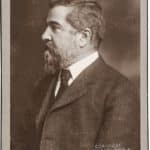


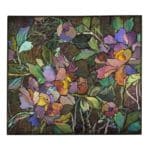

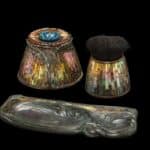
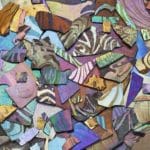
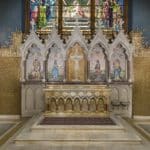




Related posts: